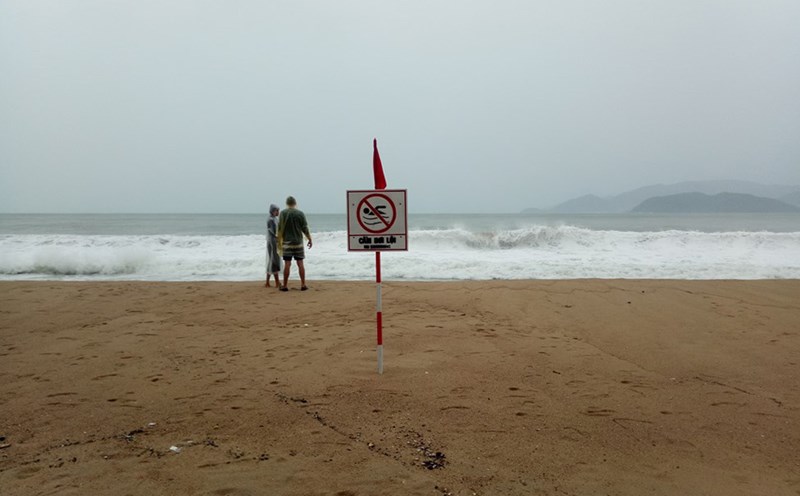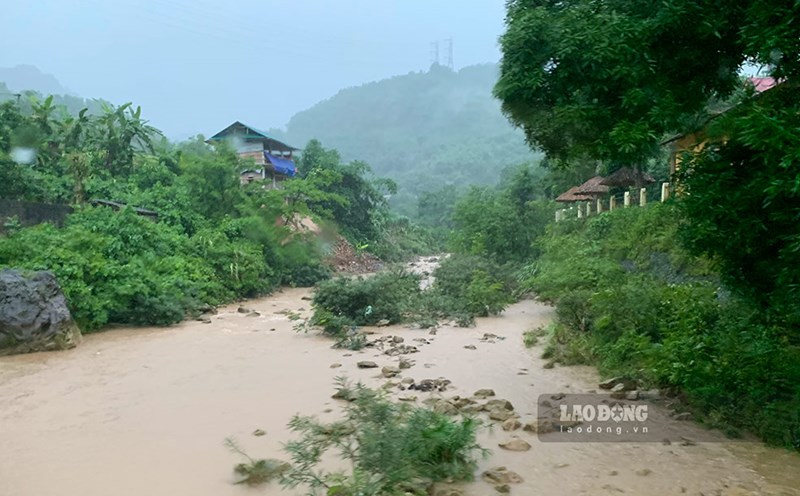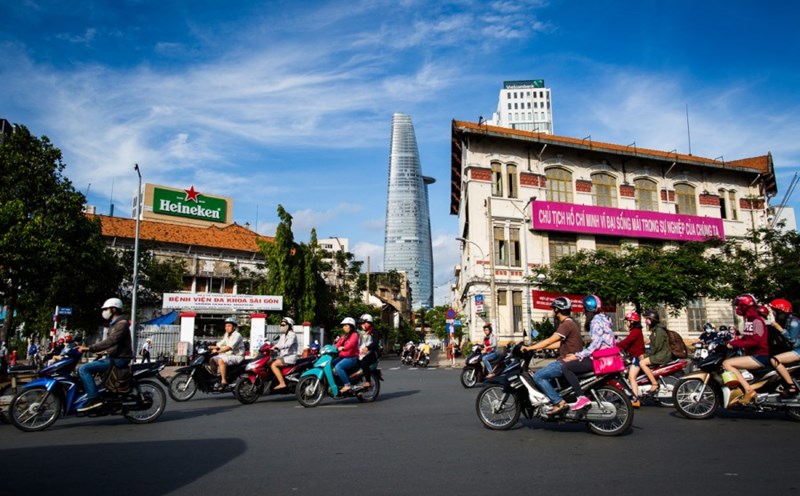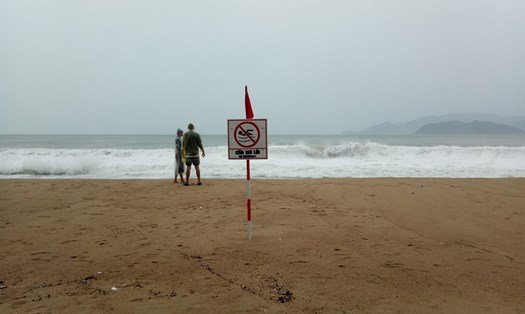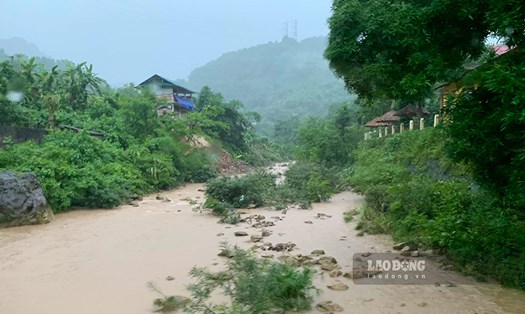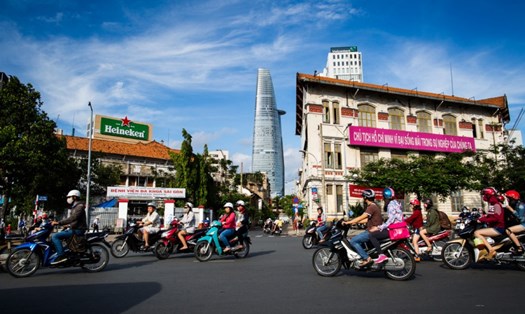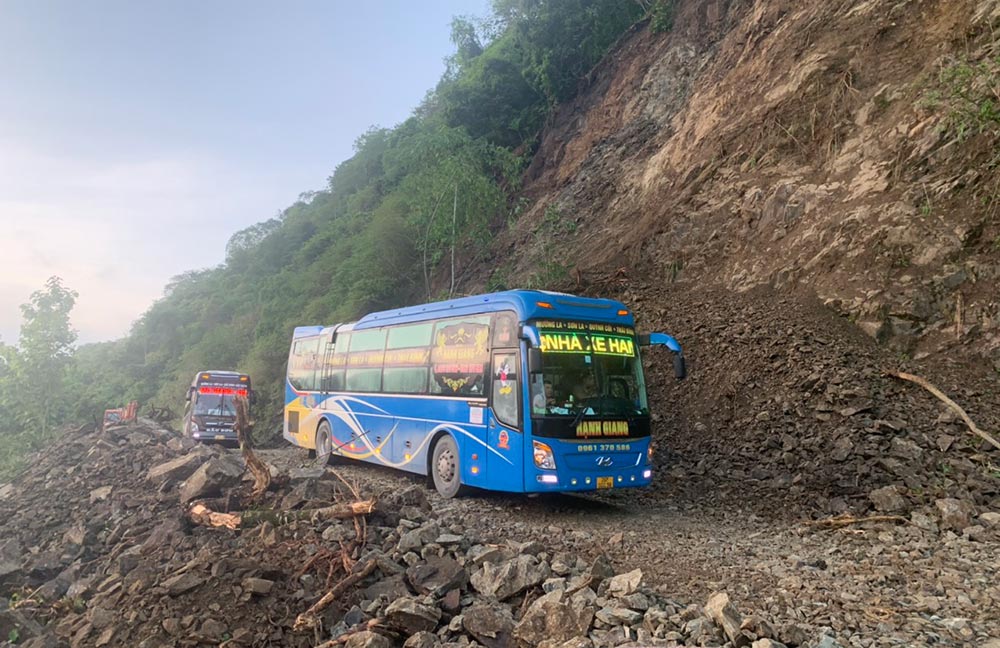
To ensure safety when driving during the stormy season, especially in dangerous and complex terrain, the following principles should be noted:
Do not cross underground overflow: Underground overflow is where water flows across the road on mountain slopes. If the water rises, the vehicle may be swept away. When encountering an underground overflow, observe carefully and wait for the water to recede before continuing.
Avoid landslides: Before going through steep passes, update information about road conditions to choose a safe route. If you encounter a landslide, get out of your vehicle to check the condition and decide to continue or stop. On rocky mountain roads, pay attention to signs of landslides such as road surface vibrations and loud noises.
Maintain a safe distance and avoid large vehicles: To avoid congestion and unwanted incidents, keep a distance from the vehicle in front and avoid being close to large vehicles. This is to avoid splashing water on the windshield.
When passing through flooded areas, you should move to the center of the lane and be aware of obscured visibility.
Turn on the lights and drive in a low gear, steady throttle: In bad weather conditions, turn on fog lights, position lights or cos lights to enhance visibility. When passing through flooded areas, keep the engine speed steady and shift the manual transmission vehicle to first gear or the automatic transmission vehicle to D1 to avoid water entering the exhaust pipe.
When you get stuck, shift to 1st or 2nd gear and accelerate slowly. Avoid stepping on the accelerator hard when the wheel is slipping, because this action can bog the car deeper.
Do not suddenly downshift while driving in the rain. Sudden changes in speed on slippery surfaces can cause skidding, leading to loss of control and an accident. Be careful when downshifting on slippery roads, especially on steep passes.
Turn off loads and handle when the vehicle stalls: On steep mountain passes, turn off all unnecessary loads to reduce the load on the engine. If the car stalls, check for flooding and decide whether to restart or call for help. In case of flooding, leave the vehicle and call for help to avoid the risk of water damage.
Braking principles: Do not use the handbrake when the vehicle is sliding. Instead, slowly release the accelerator and keep the car going straight until it stabilizes, then gently use the foot brake to bring the car back to balance.
If you see a pothole or large puddle, hold the steering wheel firmly and do not control the steering wheel, throttle or brake suddenly so that the vehicle moves straight through. Hold the steering wheel tightly and avoid roads with deep water or strong currents.
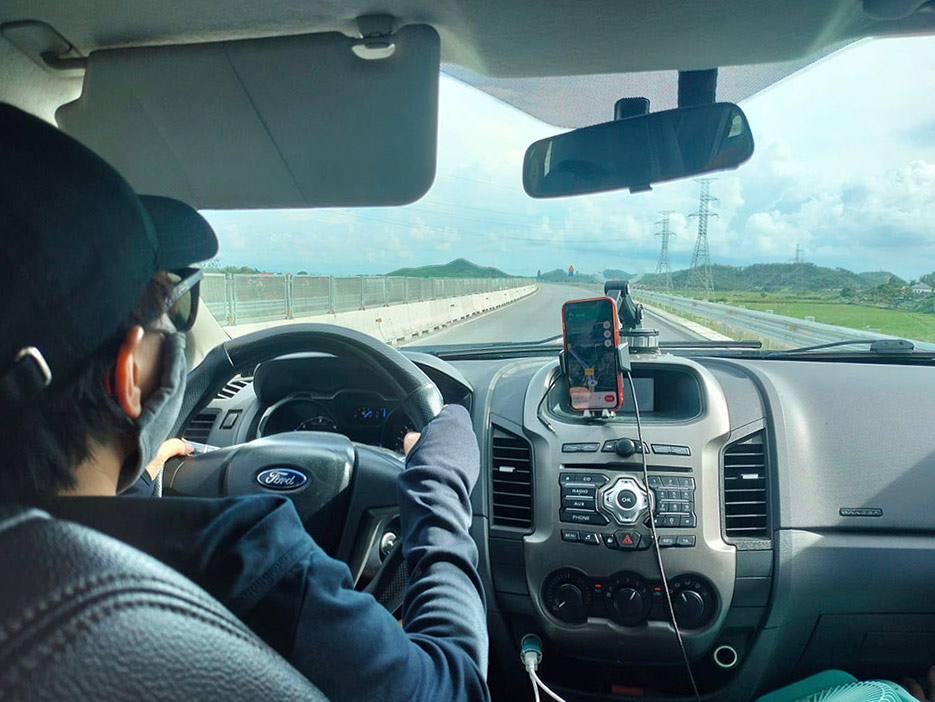
Pay attention to regular maintenance: You should regularly check the brake system, lights and wipers, as well as the condition of the tires to ensure the machine is operating properly. It's best to do it periodically to save time, money and maximize safety.
For tires, remember to replace new tires every 40,000-50,000 km. Make sure tire pressure meets technical standards because the treads on the tire surface are designed to drain water and ensure grip between the tire and the road surface. Worn tires or low tire pressure can increase the risk of Hydroplaning (tires being lifted off the road surface), causing the vehicle to skid and lose control on slippery roads.
Additionally, you should replace your wiper blades or wiper blades at least once a year.
Always bring basic car repair tools: This tool set needs to be prepared to suit individual needs. The car repair kit should include necessary items such as spare tire, flashlight, tire pump, water, first aid kit and tools to call for help...

